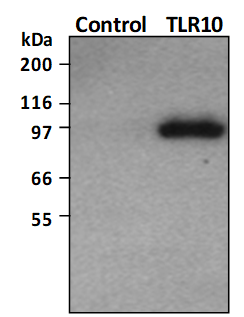Mouse HVEM / TNFRSF14 Recombinant Protein (His & Fc Tag)(Discontinued)
Shipping Info:
For estimated delivery dates, please contact us at [email protected]
| Amount : | 200 µg |
| Purification : | > 85 % as determined by SDS-PAGE |
| Content : | Formulation Lyophilized from sterile PBS, pH 7.4. Normally 5 % - 8 % trehalose, mannitol and 0.01% Tween80 are added as protectants before lyophilization. |
| Storage condition : | Store it under sterile conditions at -20°C to -80°C. It is recommended that the protein be aliquoted for optimal storage. Avoid repeated freeze-thaw cycles. |
| AA sequence : | NP_849262.1 |
| Alternative Name : | Atar Protein, Mouse; HveA Protein, Mouse; Hvem Protein, Mouse; Tnfrs14 Protein, Mouse |
Source : CHO Stable Cells
Herpesvirus entry mediator (HVEM), also referred to as TNFRSF14, TR2 (TNF receptor-like molecule) and ATAR (another TRAF-associated receptor), is a member of type I transmembrane protein belonging to the TNF-receptor superfamily. It is expressed on many immune cells, including T and B cells, NK cells, monocytes, and neutrophils. Two TNF superfamily ligands lymphotoxin alpha (TNF-beta) and LIGHT (TNFSF14) are identified as cellular ligands for HVEM and initiate the positive signaling. However, recent studies have revealed that HVEM is also involved in the unique inhibitory signaling pathway for T cells through activating tyrosine phosphorylation of the immunoreceptor tyrosine-based inhibitory motif (ITIM) in B and T lymphocyte attenuator (BTLA). HVEM provides a stimulatory signal following engagement with LIGHT (TNFSF14) on T cells. In contrast, it can also provide an inhibitory signal to T cells when it binds the B and T lymphocyte attenuator (BTLA), a ligand member of the Immunoglobulin (Ig) superfamily. Thus, HVEM may be viewed as a molecular switch, capable of facilitating both stimulatory and inhibitory cosignaling in T cells. Substantial evidence from both human disease and from experimental mouse models has indicated that dysregulation of the LIGHT-HVEM-BTLA cosignaling pathway can cause inflammation in the lung and in mucosal tissues. Cancer Immunotherapy Co-inhibitory Immune Checkpoint Targets Immune Checkpoint Immune Checkpoint Detection: Antibodies Immune Checkpoint Detection: ELISA Antibodies Immune Checkpoint Proteins Immune Checkpoint Targets Immunotherapy Targeted Therapy
Herpesvirus entry mediator (HVEM), also referred to as TNFRSF14, TR2 (TNF receptor-like molecule) and ATAR (another TRAF-associated receptor), is a member of type I transmembrane protein belonging to the TNF-receptor superfamily. It is expressed on many immune cells, including T and B cells, NK cells, monocytes, and neutrophils. Two TNF superfamily ligands lymphotoxin alpha (TNF-beta) and LIGHT (TNFSF14) are identified as cellular ligands for HVEM and initiate the positive signaling. However, recent studies have revealed that HVEM is also involved in the unique inhibitory signaling pathway for T cells through activating tyrosine phosphorylation of the immunoreceptor tyrosine-based inhibitory motif (ITIM) in B and T lymphocyte attenuator (BTLA). HVEM provides a stimulatory signal following engagement with LIGHT (TNFSF14) on T cells. In contrast, it can also provide an inhibitory signal to T cells when it binds the B and T lymphocyte attenuator (BTLA), a ligand member of the Immunoglobulin (Ig) superfamily. Thus, HVEM may be viewed as a molecular switch, capable of facilitating both stimulatory and inhibitory cosignaling in T cells. Substantial evidence from both human disease and from experimental mouse models has indicated that dysregulation of the LIGHT-HVEM-BTLA cosignaling pathway can cause inflammation in the lung and in mucosal tissues. Cancer Immunotherapy Co-inhibitory Immune Checkpoint Targets Immune Checkpoint Immune Checkpoint Detection: Antibodies Immune Checkpoint Detection: ELISA Antibodies Immune Checkpoint Proteins Immune Checkpoint Targets Immunotherapy Targeted Therapy
Measured by its binding ability in a functional ELISA. Immobilized mouse HVEM-Fc at 10 µg/mL (100 µL/well) can bind biotinylated mouse BTLA-Fc ,The EC50 of biotinylated mouse BTLA-Fc is 152-228 ng/mL.
Endotoxin :< 1.0 EU per µg of the protein as determined by the LAL method
For Research Use Only. Not for use in diagnostic/therapeutics procedures.
|
There are currently no product reviews
|




















.png)









